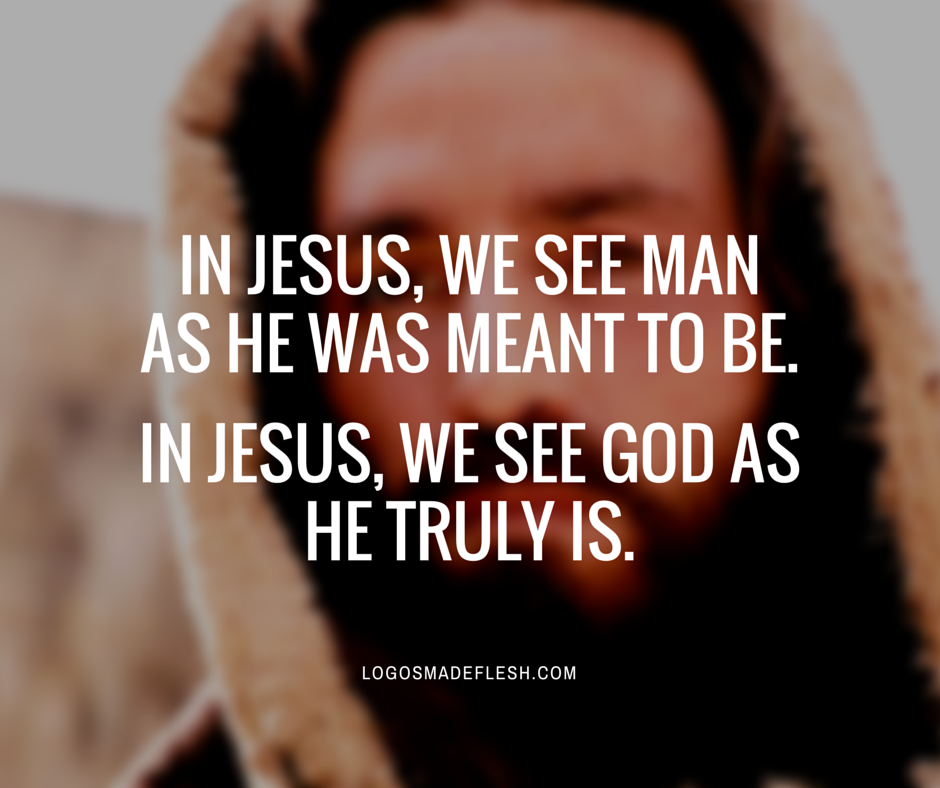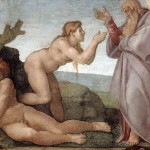Archives For Easter
The best evidence for the piercing of Christ’s side (John 19:34) being an allusion to the creation of Eve (Genesis 2:21-22) is found in its seamless connection to John’s core message and themes. In my last post I noted three verbal and or circumstantial parallels between John 19:34 and Genesis 2:21-22: Death as sleep, opened side, and the substance. In this post we explore John’s theme of new creation.
The Source of Creation
Beginning with John’s opening allusion to Genesis 1:1 (“in the beginning”), references to the creation abound in this gospel. John ascribes the creation of all things to the Word/Logos (1:3) and connects the Word/logos with Jesus (1:14) and so declares that what came into being through Jesus was a new creation – a new beginning.
Life and Light. As the author of creation, Jesus, the Word made flesh, is the source of life and light (Gen. 1:3). John 1:4 states, “in Him was life, and that life was the light of all people.” And throughout the gospel we see Jesus offering life and light to the people he encounters, most notably light to the man born blind in chapter 9 and life to the dead man Lazarus in chapter 11.
Sabbath Work. Jesus’ Sabbath “work” is also tied to creation narrative. When people object in John 5 to Jesus’ healing on the same day God rested from creation, Jesus responds, “My Father is working until now, and I am working.” (5:17). Jesus implies that neither God nor himself has ever stopped working. The people are outraged. “This is why the Jews were seeking all the more to kill him, because not only was he breaking the Sabbath, but he was even calling God his own Father, making himself equal with God” (5:18). For Jesus, in John, there is yet to be a completion to the creation and therefore there has been no true day of rest. We’ll return to this important idea below.
A New Week
John also interestingly opens his gospel with a series of six days (John 1:29, 35, 39, 43; 2:1, 12). Such a tight sequence is unique in John and appears to allude to the days of creation. But more than simply echoing the number of days, each day conceptually parallel the corresponding day in the creation account. Note the following similarities.
- On the first day God creates light and separates the light from the darkness (1:3-5). On the first day in John (note: John 1:29 begins the second day) John distinguishes light from the darkness (1:5).
- On the second day, God separates the water which was below from the waters above (1:6-8). On the second day in John (1:29-34), John the Baptist states twice that he baptizes “in water” and then goes on to proclaim that Christ will baptize “in the Holy Spirit” (1:33) Like the higher and lower waters in Genesis, there are two baptisms; an earthly baptism and a heavenly one, a baptism in water below and baptism in water from above.
- On the third day, God gathers the water into one place and causes dry ground to appear. He also causes the earth to produce fruit after its own kind. On the third day in the gospel of John (1:34-39), Jesus speaks for the first time. He also bears fruit, reproducing himself in the gathering of his first disciples.
- On the fourth day, God creates “the greater light to govern the day and the lesser light to govern the night.” In John (1:39-43), Jesus meets with Peter. Jesus, the greater light (8:12), governs the day (9:4) while Peter, a lesser light, will govern the night.
- On the fifth day of creation, God creates fish in the sea and birds in the air. On the fifth day in John, Jesus calls Philip who, like the fishermen Peter and Andrew is from a place called Bethsaida, meaning “house of fish.”
- On the sixth day of creation, God creates male and female. Genesis 2 provides the full details, revealing it as the first marriage in scripture. “For this reason a man shall leave his mother and father and be joined to his wife and the two shall become one flesh.” On John’s sixth day, Jesus attends a wedding.
- And as with Genesis, John’s sixth day is the last day of this series of active days. God rests on the seventh day. In John’s gospel Jesus remains at Capernaum for a few days.
For more on this see Paul Trudinger’s article “The Seven Days of the New Creation in St. John’s Gospel: Some Further Reflections.”
I think it’s again interesting that we find no clear rest day in this “creation” week. The Sabbath may be hinted at but it’s not reproduced. Jesus simply continues his work without ever truly resting. This matches Jesus words that He and His Father have only continued to work. Jesus’ whole ministry in John should be understood as a continuation of the sixth day – the day in which God made man in his own image.
“It is Finished!”
Allusions to the creation account also cluster around Jesus’ arrest, death and resurrection. Andreas Kostenberger points to several possible instances of the new creation motif here.
- The setting of the passion narrative in a garden, invoking the memory of Eden (18:1, 26; 19:41)
- Pilate’s identification of Jesus as “the man” (19:5), which may present Jesus as the new Adam
- The possible portrayal of Jesus’ resurrection as the beginning of a new creation (1:3; 20:1)
- The identification of Jesus as “the gardener” by Mary (20:15), reflecting misunderstanding and possible also irony
- Jesus’ breathing on his disciples and his giving of the Spirit in the final commissioning scene (20:22), invoking the creation of Adam in Genesis 2:7 (Ezek. 37:9)
To this we need to add Jesus’ cry from the cross in John 19:30, “It is finished.”
After this, Jesus, knowing that all was now finished, said (to fulfill the Scripture), “I thirst.” A jar full of sour wine stood there, so they put a sponge full of sour wine on a hyssop branch and held it to his mouth. When Jesus had received the sour wine, he said, “it is finished,” and he bowed his head and gave up his spirit. Since it was the day of Preparation, and so that the bodies would not remain on the cross on the Sabbath (for that Sabbath was a high day), the Jews asked Pilate that their legs might be broken and that they might be taken away. (19:28-31)
Note the similarities to the creation account. Jesus is declaring his work finished on the day immediately preceding a weekly Sabbath, a word which means rest. Here’s Genesis 2:1-3,
Thus the heavens and the earth were finished, and all the host of them. And on the seventh day God finished his work that he had done, and he rested on the seventh day from all his work that he had done. So God blessed the seventh day and made it holy, because on it God rested from all his work that he had done in creation.
Given John’s repeated references to the creation and Jesus’ insistence that the Father and He had not stopped working even for a Sabbath, we should hear Jesus’ cry as the ultimate completion to their work. In Jesus’ death and burial the creation was completed and the Sabbath finally realized.
The Creation of Eve from the Side of Adam
The capstone of this new creation occurs a few verses later in the piercing of Christ’s side and the flow of blood and water (John 19:34). As an allusion to the creation of Eve, John 19:34 fits seamlessly with John’s theme of new creation. In my next post we’ll explore John’s theme of new birth.




















